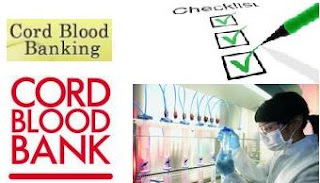When it comes to saving your baby’s cord blood, the more you know the better. Cord blood, which contains stems cells that can treat a host of diseases, can be stored in a private or public bank. What should you take into account as you make your decision about where to store your baby’s cord blood?
The first one I wanted to mention that, Cord blood banking is a business, and businesses do go bankrupt. Fortunately, if a cord blood bank does go out of business, invariably another company takes over their frozen inventory.
While it is reassuring that parents would not lose their child's cells, it's not desirable to have them moved from one lab to another, and, worse, to speculate whether they were maintained properly in the waning days of the failed company.
The American Academy of Pediatrics suggests that you consider private cord banking if you have a family member with a disease that may be treatable with stem cells. That’s because your baby’s cord blood may be a better match for that sick family member than a nonfamilial donation.
For a fee, a private cord blood bank will collect, process, freeze, and store your baby's stem-cell-rich umbilical cord blood for your family's future medical use.
How to Choose a Private Cord Blood Bank
Step 1: Talk with your practitioner about private cord blood banking. It’s best to discuss the issue early in your second trimester so that you have more than enough time to make your decision (even though it may be difficult to think about your baby’s cord blood when you haven’t even felt those first little kicks yet!).
Step 2: Make sure your practitioner is willing and able to collect the cord blood. It’s rare that a doctor or midwife couldn’t (or wouldn’t) do this simple and quick procedure, but he or she may charge you a fee.
Step 3: Do your research. Any cord blood bank you’re considering should be accredited with the American Association of Blood Banks (AABB), which has a list of accredited banks. You can also visit parentsguidecordblood.org, a site that offers detailed information about every private (and public) bank in the US.
Step 4: Decide on a private cord blood bank. Ideally, you’ll want to enroll with your bank of choice by the end of your second trimester or week 27 (since babies can be born early), but if that’s not possible, aim to sign up before week 34. Most banks charge a collection fee of $1,500 to $2,000, and a yearly fee of about $125, and many offer payment plans. And if there is a pressing family medical need (such as a family member who’s in need of a transplant), some private banks offer free or discounted banking.
Step 5: Wait for your cord-blood collection kit in the mail. Once you sign up, the cord blood bank will mail you a collection kit so that you’ll have it ready for the big day (or night!). The kit will probably have a medical form for you to fill out, plus sealed medical supplies your practitioner will use to collect the cord blood. Fill out the form, sign it, and put it back in the kit (but leave the kit’s medical supplies sealed). Pack the kit away in your hospital bag so you won’t have to scramble to find it.
Step 6: Call the bank when you’re in labor (or when you get to the hospital). You’ll probably want to assign this task to your spouse since you’ll probably be a bit (or very!) distracted. Once the bank gets your call, it’ll arrange for a courier to pick up your cord blood after it’s collected.
Step 7: Give the cord-blood kit to your practitioner (or the staff). This will remind him or her about your cord blood banking decision, and it will alert the medical staff that they’ll need to collect some blood from you before delivery (the kit comes with the materials your practitioner will need to collect and send in your blood).
Step 8: Give birth! Right after you deliver (whether it’s a vaginal or cesarean birth), your practitioner will clamp the umbilical cord (a painless, safe, and easy process) and collect the cord blood with the supplies provided in your kit. (You won’t even notice this is happening. You’ll be gazing at that baby!) Your partner can even cut the cord because that doesn’t affect the collection process.
Step 9: Hand off the cord blood kit. Your practitioner or the medical staff will give the cord-blood kit to a secure courier who sends the kit off to the laboratory for storage. It will arrive at the lab no later than 36 hours after you deliver your precious bundle.
Step 10: Wait to be notified. The private cord blood bank will contact you to let you know that your cord blood arrived safely and to tell you how much they were able to collect and process.
Step 11: Rest easy. Each year the private cord blood bank will bill you for an annual fee (about $125) and your baby’s cord blood will be available to you at any time should you need it.
Source : www.whattoexpect.com







